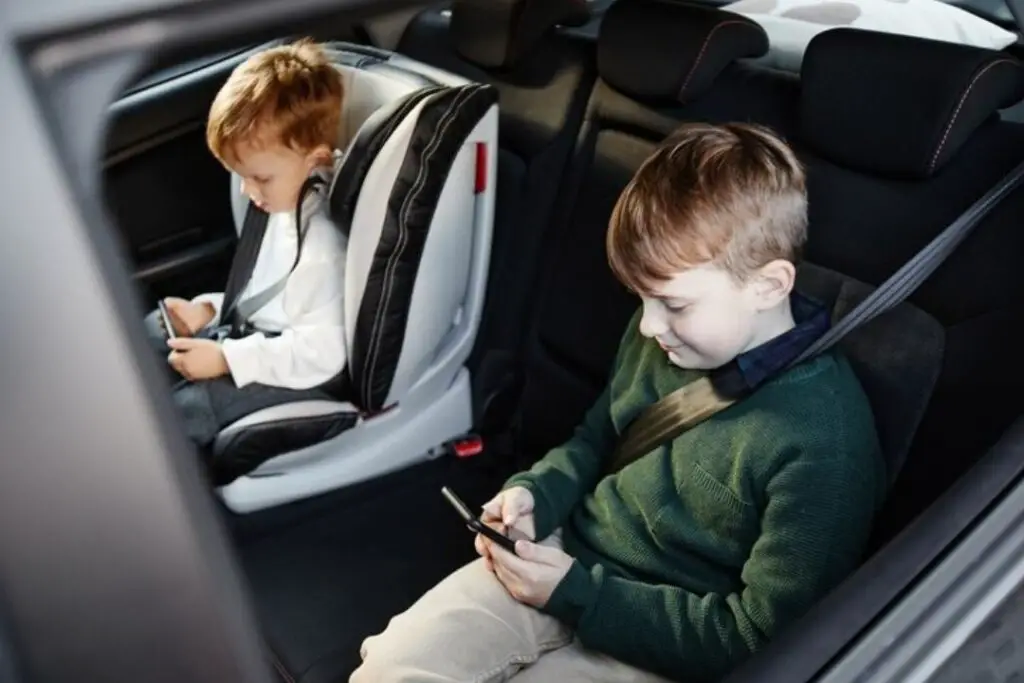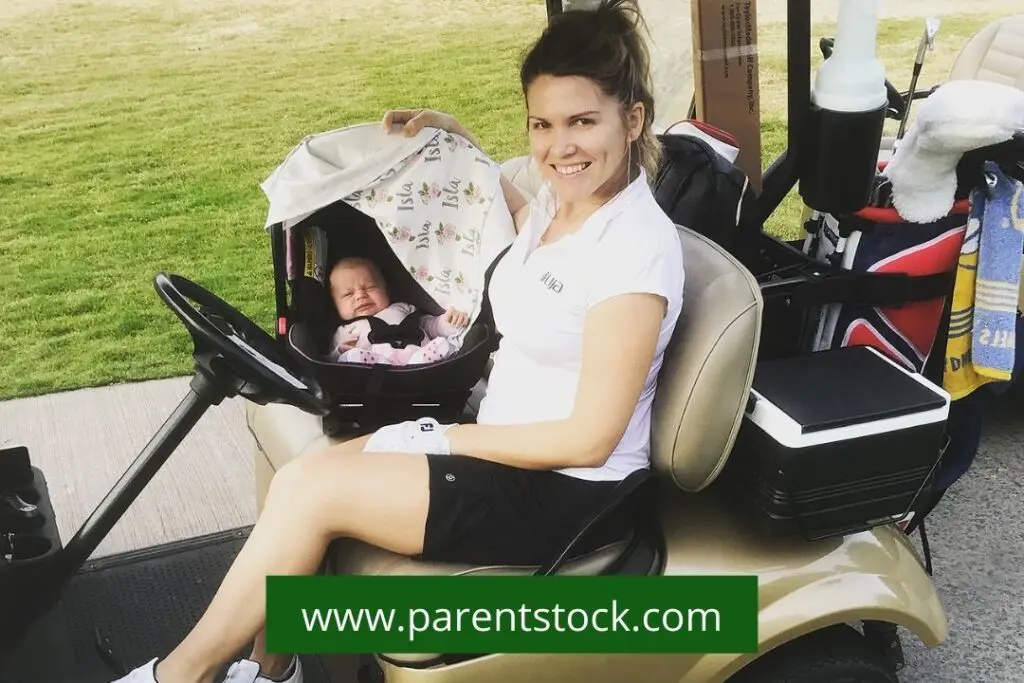A convertible car seat is a vital component of child safety in the world of automobile travel. It represents a versatile and adaptable solution for parents and caregivers, designed to accommodate the changing needs of growing children. Convertible car seats, unlike infant car seats suitable only for infants and young babies, are designed to “convert” from rear-facing to forward-facing positions, making them suitable for a broader range of ages and sizes. This flexibility means that a single convertible car seat can accompany a child from infancy through toddlerhood and, in some cases, even into early childhood.
Beyond safety, they offer comfort and convenience features to ensure a pleasant and secure ride for little passengers. As we delve deeper into the world of convertible car seats, we will explore their various types, installation methods, safety considerations, and key factors to consider when selecting the right one for your child.
Types of Convertible Car Seats
Designers create convertible car seats to accommodate a wide range of children’s ages and sizes, making them a versatile choice for parents and caregivers. There are several types of convertible car seats available on the market, each tailored to specific needs and preferences. Here are the primary types:
Rear-Facing Only Convertible Car Seats:
These seats are designed for infants and are used exclusively in the rear-facing position. They offer a snug and secure fit for newborns and are equipped with features like removable infant inserts and canopies.
Rear-Facing to Forward-Facing Convertible Car Seats: The most common type, these seats can be used in both rear-facing and forward-facing modes. They accommodate infants in the rear-facing position and transition to forward-facing as the child grows. Many can support children up to 40-50 pounds in the rear-facing mode
3-in-1 Convertible Car Seats: These versatile seats can serve as rear-facing, forward-facing, and booster seats, providing extended usability as a child grows. They often have higher weight limits, making them suitable for older children.
4-in-1 All-in-One Convertible Car Seats: These seats offer the most extended usability, serving as rear-facing, forward-facing, high-back boosters, and backless boosters. They can accommodate children from infancy through their booster seat years.
Combination Car Seats: While not true convertibles, combination car seats combine forward-facing harness seats with booster seats. They are suitable for older toddlers and preschoolers who have outgrown their rear-facing seats.
When selecting a convertible car seat, it’s essential to consider factors like your child’s age, weight, and height, as well as your vehicle’s size and the seat’s ease of installation. Choosing the right type of convertible car seat ensures the safety and comfort of your child while traveling.
What are the advantages of convertible car seats?
Convertible car seats offer numerous advantages, making them a popular choice for parents and caregivers. Firstly, they provide exceptional versatility, accommodating infants, toddlers, and older children in one seat. This versatility saves both money and hassle, as you won’t need to purchase multiple seats as your child grows.
Furthermore, convertible car seats widely regard promoting extended rear-facing use as the safest position for infants and toddlers.This helps protect their fragile neck and spine in the event of a collision.
In addition to safety, manufacturers typically design these seats with comfort in mind, incorporating features such as adjustable harness heights, multiple recline positions, and soft padding.Transitioning from rear-facing to forward-facing is seamless, ensuring a smooth transition as your child develops. Convertible seats often have higher weight limits, allowing children to remain in the rear-facing position longer, enhancing their safeThis ensures a comfortable ride for your child, making long journeys more enjoyable.
Convertible car seats are also user-friendly, with straightforward installation processes. Many models have user-friendly features like color-coded installation systems and clear labeling.
In conclusion, the advantages of convertible car seats are numerous. They provide versatility, safety, comfort, and ease of use. All of which contribute to their popularity among parents and caregivers seeking the best possible protection for their children
How to Choose a Convertible Car Seat?
Choosing a convertible car seat requires careful consideration to ensure the safety and comfort of your child during car travel. Here’s a step-by-step guide on how to make this crucial decision: Users must adhere to weight and height limits that come with convertible car seats for optimal safety.
Next, check your vehicle’s compatibility .Parents and caregivers must adhere to weight and height limits that convertible car seats come with for optimal safety. Some car seats may not fit properly or be compatible with certain cars.
Consider the seat’s safety features. Look for car seats that meet or exceed safety standards. Features like a five-point harness, side-impact protection, and energy-absorbing foam can enhance safety significantly.
Evaluate the ease of installation. Choose a car seat with a user-friendly installation process. Features like a LATCH system or clear labeling can simplify installation and reduce the risk of errors.
Assess the seat’s comfort features. Ensure it has adjustable harness heights, multiple recline positions, and ample padding for your child’s comfort during long journeys.
Read user reviews and expert recommendations. Seek feedback from other parents who have used the same car seat model and consider expert opinions and safety ratings.
Factor in your budget. Convertible car seats come in a wide range of price points. While safety is paramount, find a seat that meets your budget without compromising on essential features.
Lastly, check the expiration date. Car seats have an expiration date, typically around six to ten years from the manufacturing date. Ensure you purchase a seat with a usable lifespan that fits your child’s needs.
By following these steps and considering these factors, you can confidently choose a convertible car seat that best suits your child and provides the utmost safety and comfort during car rides.
Safety Features and Standards
Manufacturers equip convertible car seats with a multitude of safety features, meticulously designing them to meet rigorous industry safety standards.These features play a crucial role in safeguarding children during car travel.
First and foremost, convertible car seats employ a five-point harness system. This system secures the child at five critical points. Over the shoulders, across the hips, and between the legs, distributing crash forces evenly and reducing the risk of injury in a collision.
To bolster side-impact protection, many convertible seats incorporate energy-absorbing foam within the seat’s shell. This foam absorbs and dissipates energy from a side-impact collision, minimizing the force transmitted to the child.
Another critical safety feature is the reinforced steel frame found in high-quality convertible car seats. This sturdy frame enhances the seat’s structural integrity, making it more resilient in the event of a crash.
Moreover, convertible seats include tether anchors and LATCH (Lower Anchors and Tethers for Children) systems for secure installation. These mechanisms anchor the seat to the vehicle, preventing excessive movement during a collision.
Transitioning from rear-facing to forward-facing, convertible seats often feature multiple recline positions, ensuring the child’s optimal comfort and safety as they grow.
Furthermore, these seats adhere to Federal Motor Vehicle Safety Standards (FMVSS) and undergo extensive testing to meet or exceed these standards. This rigorous testing evaluates crash performance, harness strength, flammability, and other safety aspects.
In conclusion, convertible car seats integrate a range of safety features. These features work in concert to protect children during car travel. By adhering to industry safety standards and implementing innovative designs. These seats provide parents and caregivers with peace of mind, knowing their children are well-protected while on the road.
Installation Methods
Installing convertible car seats correctly is paramount for child safety during car travel. There are two primary methods for installing convertible car seats: the LATCH system and seat belts. Each method has its own set of guidelines and considerations.

LATCH (Lower Anchors and Tethers for Children) System:
- Locate the LATCH anchors in your vehicle, typically found in the crease of the rear seat cushion. These anchors are specifically designed for securing child car seats.
- Attach the lower anchors from the car seat to the corresponding LATCH anchors in your vehicle. Ensure a snug fit and that the car seat is securely fastened.
- Tighten the straps connected to the lower anchors, removing any excess slack. This step ensures a firm connection.
- For rear-facing seats, use the tether strap provided by the car seat manufacturer. Attach it to the designated tether anchor in your vehicle, often found on the back of the rear seat.
- Adjust the recline angle of the car seat to meet the manufacturer’s recommendations. It ensure your child is comfortable and safe.
Seat Belts:
- Place the car seat in the desired position, either rear-facing or forward-facing, following the manufacturer’s instructions for the correct angle and position.
- Thread the seat belt through the designated path on the car seat. Ensure the belt lies flat and free from twists.
- Buckle the seat belt and pull it tight. This step should eliminate any excess slack in the seat belt.
- For rear-facing seats, use a locking clip if required by your car seat’s instructions. A locking clip prevents the seat belt from loosening during travel.
- Verify that the car seat is securely installed by giving it a firm tug at the base. It should not move more than one inch in any direction.
- Adjust the harness straps according to your child’s height and weight, ensuring a snug but comfortable fit.
Both the LATCH system and seat belt installation methods are valid and safe when executed correctly. Always consult your vehicle’s manual and the car seat manufacturer’s instructions for specific details, as installation procedures may vary based on the car seat model and vehicle type. Proper installation is essential for ensuring your child’s safety while on the road.
Weight and Height Limits
Convertible car seats come with specific weight and height limits that play a critical role in child safety during car travel. These limits are designed to ensure that children remain in the safest position for their age and size.
Most convertible car seats are suitable for infants and toddlers in the rear-facing position, offering weight limits ranging from 30 to 50 pounds or more and height limits typically up to 40 inches or higher. It is crucial to adhere to these limits and keep a child rear-facing until they meet both the weight and height requirements set by the car seat manufacturer. Rear-facing is considered the safest position for young children, as it provides optimal support for the head, neck, and spine.
Once a child outgrows the rear-facing limits, it’s time to transition to the forward-facing position. This usually occurs when a child reaches the maximum weight and height limits set by the car seat manufacturer, which can vary between 40 and 65 pounds or more, with height limits up to 50 inches or taller. The transition to forward-facing should only occur after meeting both criteria.
Transitioning too early can expose a child to increased risk in the event of a collision. Thus, it is imperative to follow the manufacturer’s guidelines closely. Always prioritize safety and keep children in the appropriate car seat position based on their weight and height until they are ready for the next stage, which often involves using a booster seat until they reach a sufficient size to use the vehicle’s seat belt alone.
Adjustability and Comfort
Convertible car seats are not only designed with safety in mind but also with the comfort of children during car journeys. Several features are incorporated to ensure a pleasant and cozy experience for young passengers.
1. Adjustable Harnesses: Convertible car seats often feature harnesses that can be adjusted to accommodate a child’s growth. This customization ensures that the harness straps are at the right height for the child’s shoulders, promoting both safety and comfort. As the child grows, parents can easily reposition the harness to maintain a secure and snug fit.
2. Multiple Recline Positions: Many convertible car seats come with multiple recline positions, allowing parents to choose the most comfortable angle for their child. This feature is especially important for rear-facing seats. As it helps infants maintain a semi-reclined position that supports their developing neck and spine.
3. Plush Padding and Cushioning: Car seats often incorporate plush padding and cushioning to create a comfortable seating environment. This extra padding not only provides a softer surface for the child but also helps absorb shock in the event of a collision, adding an additional layer of protection.
4. Adjustable Headrests: Convertible car seats frequently include adjustable headrests that can be customized as a child grows taller. These headrests provide vital support for the child’s head and neck and contribute to a comfortable and safe ride.
5. Breathable Fabrics: Some car seat models use breathable fabrics that help regulate the child’s temperature and reduce sweating, enhancing overall comfort during long trips.
6. Built-in Cup Holders and Storage Pockets: For older children, built-in cup holders and storage pockets can make a significant difference in comfort during car rides. These features provide a convenient place to store snacks, drinks, toys, or small personal items.
7. Easy-to-Adjust Straps and Buckles: Convertible car seats aim to make the harness system easy to adjust and secure. Quick-adjust harness straps and buckles simplify the process of getting the child in and out of the seat while ensuring a snug fit.
By incorporating these comfort-enhancing features, convertible car seats not only prioritize the safety of children but also make car travel a more pleasant experience for both parents and their little passengers. Parents should carefully consider these features when selecting a car seat to ensure the utmost comfort and safety for their child.
Top Brands and Models
Several reputable brands offer popular and highly-rated convertible car seat models in the market, ensuring parents have a wide range of options to choose from for their child’s safety and comfort during car travel.
1. Graco: Graco is a well-known name in the car seat industry, offering a variety of convertible car seat models. The Graco Extend2Fit and Graco 4Ever DLX are two popular options. Parents praise the Extend2Fit for its extended rear-facing capabilities, while they recognize the 4Ever DLX for its all-in-one functionality.
2. Britax: Another respected brand with a strong safety reputation is Britax. Standout models like the Britax Boulevard ClickTight and Britax Marathon ClickTight are known for their easy installation and robust safety features.
3. Chicco: Chicco’s NextFit and Chicco Fit4 are popular choices among parents. The NextFit offers a no-rethread harness for easy adjustments. While the Fit4 can accommodate children from infancy to toddlerhood and beyond.
4. Evenflo: Evenflo offers budget-friendly options without compromising on safety. The Evenflo Symphony DLX and Evenflo Tribute LX are notable models. The Symphony DLX provides extended use in rear-facing, forward-facing, and booster modes.
5. Diono:Families with multiple car seats or limited backseat space consider Diono car seats, including the Diono Radian 3RXT, as ideal due to their narrow profiles.The Radian 3RXT offers extended rear-facing and forward-facing capabilities.
6. Maxi-Cosi: Maxi-Cosi Pria and Maxi-Cosi Magellan are well-regarded for their comfort and style. The Pria offers plush padding and a premium look, while the Magellan provides versatile seating positions and extended use.
7. Safety 1st: Safety 1st offers affordable convertible car seats like the Safety 1st Grow and Go and Safety 1st Alpha Omega Elite. These models provide good value for parents on a budget.
8. UPPAbaby: Their sleek design and safety features are what UPPAbaby’s ALTA and KNOX are known for. These convertible car seats offer innovative technology and high-quality materials.
When selecting a convertible car seat, it’s crucial to consider factors like your child’s age, weight, height, vehicle type, and budget. Additionally, always check for the latest safety ratings and reviews to ensure that the chosen car seat meets your specific needs and standards for child safety during car travel.
User Reviews and Recommendations
User reviews and recommendations from parents and caregivers who have used specific convertible car seats provide valuable insights into the performance and suitability of these car seats. While individual experiences may vary, common themes emerge:
- Safety: Many users emphasize the safety features and performance of convertible car seats. They appreciate models that offer robust side-impact protection, a secure harness system, and sturdy construction. Positive comments often highlight how these features have provided peace of mind during car journeys.
- Ease of Installation: User reviews frequently mention the ease of installation as a crucial factor. Convertible car seats that are user-friendly and come with clear instructions are highly praised. Parents appreciate models with user-friendly LATCH systems or ClickTight technology, making installation straightforward.
- Comfort: Parents and caregivers often discuss the comfort of these car seats for their children. They look for models with plush padding, adjustable headrests, and multiple recline positions to ensure a comfortable and secure fit for children of various ages.
- Longevity: Convertible car seats that offer extended use, such as accommodating rear-facing for longer or converting into booster seats, receive positive feedback. Parents value seats that grow with their children, saving them from needing to purchase multiple car seats.
- Size and Fit: Reviews frequently touch on the size and fit of convertible car seats in different vehicles. Models that are compact and fit well in a variety of cars receive praise, particularly from families with multiple vehicles.
- Price and Value: Users often mention the affordability and value of the car seats. Budget-friendly options that don’t compromise on safety and comfort are highly appreciated.
- Cleaning and Maintenance: Parents appreciate car seats with removable and machine-washable covers, as well as easy-to-clean materials, as this makes maintenance more manageable.
- Style and Design: While not the top priority, some users appreciate car seats with stylish designs and color options that complement their vehicle’s interior.
It’s essential to consider a range of user reviews and recommendations when choosing a convertible car seat. Each family’s needs and preferences may differ, so reading multiple reviews can provide a comprehensive understanding of how a particular car seat performs in real-world situations. Additionally, considering safety ratings and expert evaluations can help parents and caregivers make informed decisions to ensure their child’s safety and comfort during car travel.
Conclusion
Safety is paramount in the design of convertible car seats, with stringent regulations and standards ensuring optimal protection for children in the event of a collision. This adaptable and versatile car seat is a specific design to grow with children, accommodating their changing needs as they transition from infancy through toddlerhood, and, in some cases, even into early childhood.
As we delve deeper into the realm of convertible car seats, it becomes evident that they are not merely pieces of equipment but crucial tools that prioritize the well-being of children during car travel. Whether accommodating a newborn’s fragile frame or providing secure and comfortable seating for a toddler, convertible car seats exemplify the commitment to keeping our youngest travelers safe and content on the road.





